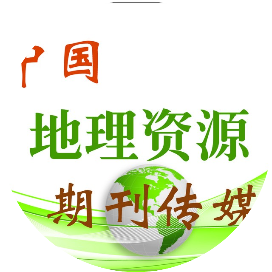Vegetation Changes from 2014 to 2023 in the Mongolian Plateau
Permafrost Region under Climate Change
LI Fengjiao, WANG Juanle, LI Pengfei,
et al.
蒙古高原多年冻土区 2014–2023 年植被变化及其对气候变化的响应
李凤娇,王卷乐,李朋飞,等
DOI: 10.5814/j.issn.1674-764x.2024.05.004
Th
e permafrost region is one of the most sensitive areas to climate change. With global warming, the
Mongolian Plateau permafrost is rapidly degrading, and its vegetation ecosystem is seriously threatened. To address this challenge, it is essential to understand the impact of climate change on vegetation at different permafrost degradation stages on the Mongolian Plateau. Based on the general permafrost distribution, in this study,we divided different permafrost regions and explored the response of vegetation to climate change at different stages of
permafrost degradation by the idea of “space instead of time” from 2014 to 2023. The results of the study showed
that: (1) Normalized difference vegetation index (NDVI) values showed a decreasing trend, and the proportion of the decreasing region was in the order of sporadic permafrost region > isolated and sparse permafrost region > continuous and discontinuous permafrost regions. (2) The main controlling factors of vegetation growth in permafrost regions are different, air temperature is the main controlling factor of vegetation growth in isolated and sparse permafrost region (
r
=–0.736) and sporadic permafrost regions (
r
=–0.522), and precipitation is the main controlling factor of vegetation growth in continuous and discontinuous permafrost region (
r
=–0.498). (3) The response of NDVI to climate change varies at different stages of permafrost degradation. In the early stages of permafrost degradation, increased land surface temperature (LST) and air temperature favored vegetation growth and increased vegetation cover, whereas increased precipitation impeded vegetation growth; as the permafrost degraded, increased LST and air temperature impeded vegetation growth, whereas increased precipitation promoted vegetation growth.
多年冻土区是对气候变化最敏感的地区之一。随着全球变暖,蒙古高原多年冻土退化加剧,多年冻土区植被生态系统受到严重威胁。面对这一挑战,了解气候变化下蒙古高原不同冻土退化阶段的植被变化至关重要。本文基于多年冻土分布图,依据“空间代替时间”的理念,划分了不同的多年冻土带,探讨了 2014‒2023 年多年冻土退化不同阶段植被对气候变化的响应。研究结果表明:(1)研究区 NDVI 值呈下降趋势,下降所占面积比例依次为零星多年冻土区>孤岛和稀疏多年冻土区>连续和不连续多年冻土区。(2)不同类型多年冻土区植被生长的主控因子不同,气温是孤岛和稀疏多年冻土区(
r
=–0.736)以及零星多年冻土区(
r
=–0.522)植被生长的主控因子,降水是连续和不连续多年冻土区(
r
=–0.498)植被生长的主控因子。(3)在不同的多年冻土退化阶段,NDVI 对气候变化的响应各不相同。在多年冻土退化初期,地表温度和气温升高有利于植被生长,增加植被覆盖,降水量的增加则会阻碍植被生长;随着多年冻土退化,地表温度和气温升高会阻碍植被生长,降水量的增加则会促进植被生长。
Citation:
LI Fengjiao, WANG Juanle, LI Pengfei, et al. 2024. Vegetation Changes from 2014 to 2023 in the Mongolian Plateau Permafrost Region under Climate Change.
Journal of Resources and Ecology
, 15(5): 1147–1159.

















